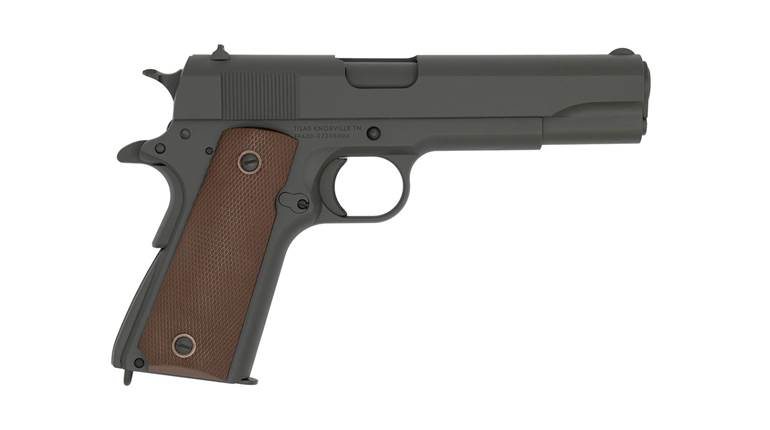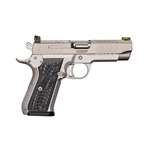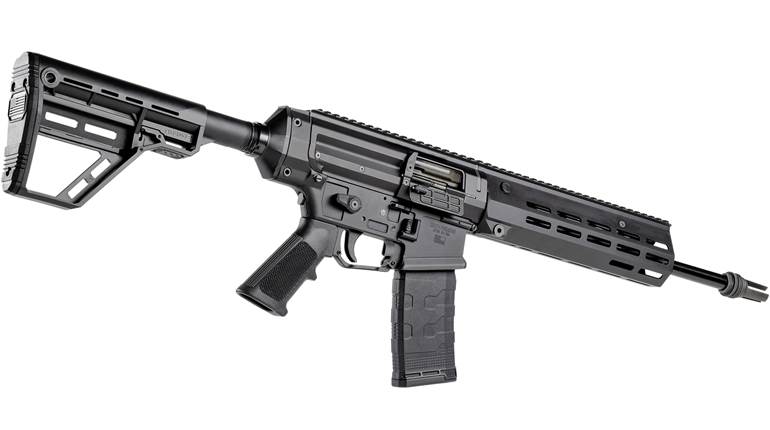
Lieutenant Junior Grade W.L. McVay, a naval aviator, watches his radio gunner, K.W. Jobe, check the flexible ANM2 .30-cal. machine guns in their Douglas SBD-3 Dauntless of VS-41 during Operation Torch in November 1942, on board the USS Ranger.
Eighty years ago, U.S. involvement in World War II was still new. During the 11 months since Pearl Harbor, American ground forces fought the Japanese across the Pacific in the Philippines, the Solomon Islands and New Guinea, but they had not yet engaged in major ground combat against the other members of the Axis alliance. A “Europe First” strategy had been affirmed by President Franklin Roosevelt and Prime Minister Winston Churchill when they met during the Arcadia Conference in December 1941, and that agreement obligated the United States to join the struggle against Germany and Italy as soon as possible.
Since the British Eighth Army was already fighting Field Marshal Erwin Rommel’s Afrika Korps in Libya and Egypt, an attack against French Morocco and Algeria would have the effect of dividing the enemy’s strength on a vulnerable front at a critical time. But the American military did not want that, preferring instead a direct attack against occupied France in 1942. To the British, such a course of action would lead inevitably to disaster because the Americans just were not ready to take on the enemy’s full strength. To them, the more prudent approach would be the indirect attack targeting French North Africa.
They argued that the potential enemy forces that would be encountered there could be more easily defeated because of their location along the “soft underbelly” of a European continent that had been brought under Nazi and fascist domination. But the troops that would be encountered during the landings would be French, not German or Italian, and because of the Vichy government’s position of armed neutrality, it was hoped that they would choose not to fight. A long history of close cultural and ideological ties with the United States offered the further optimism that maybe they could even be convinced to join the Allied cause. In every way, an invasion of French North Africa seemed to be a safer use of the valuable resources available at the time.
In late July, the president gave the order, and the U.S. military was now irrevocably committed to playing a central role in a major amphibious landing operation that would ultimately involve 850 ships traveling 5,000 miles. The assault force would storm ashore in three locations stretching from Safi on Morocco’s Atlantic coast nearly 800 miles east to the Bay of Algiers. It was given the code name Operation Torch, and it would be the opening act of a 185-day-long campaign that would end with the surrender of German and Italian forces in Tunis on May 12, 1943.
Torch would be the baptism of fire for the many U.S. military units that would carry the fight to the enemy through the six months of combat that followed. It also brought American firepower to the European–African–Middle Eastern battlefield for the first time because, once the Torch landings began, Americans came ashore carrying guns made by the government armories at Springfield and Rock Island. As a result of the full national mobilization of the American economy that was by then in full swing, guns made by private-sector manufacturers such as Colt, Auto-Ordnance, Remington, New England Small Arms and GM would also join the struggle. The guns of Torch delivered an important victory, but they did not do so without having to fight, and fight is precisely what they had to do from the very start.
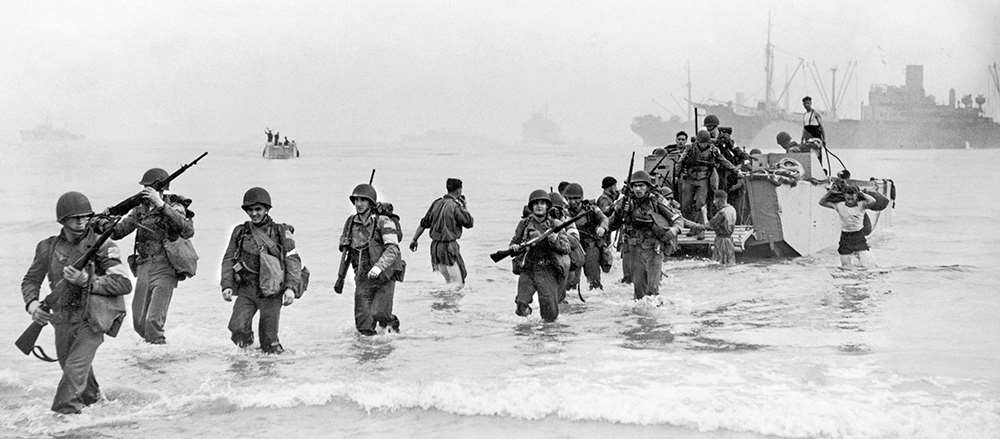
Sunday, Nov. 8, 1942
The attack began before dawn as three separate naval task forces descended on their assigned objectives, with the Eastern Task Force conducting the amphibious assault at Algiers, the Center Task Force conducting the amphibious assault at Oran and the Western Task Force conducting the amphibious landings in Morocco at Safi, Mehdya and just east of Casablanca at Fédala. The largest and therefore most powerful of the three, the Western Task Force, had sailed directly to North Africa from the Hampton Roads Port of Embarkation in Virginia, and, under the overall command of Maj. Gen. George S. Patton, it would land the U.S. Army’s 3rd and 9th Infantry Divisions as well as its 2nd Armored Division.
But before the first U.S. Army soldier fired a shot, the U.S. Navy had already done so. Of course, there was naval fire support from Task Force 34’s big guns, but Patton had been instructed not to conduct a preliminary naval bombardment of the landing area around Casablanca to avoid inflicting unnecessary casualties among defenders that, it was hoped, would ultimately choose not to offer opposition. But, as the first wave of landing craft approached the beaches, searchlights associated with French shore batteries illuminated them, dispelling the hope that this would be an unopposed landing. Those lights were quickly knocked-out by machine-gun fire from the ships of Task Force 34. When enough daylight had broken for those same batteries to see the American vessels offshore around 7 a.m., they opened fire on them, and Task Force 34 returned fire 20 minutes later. French aircraft approached at about the same time, but the fleet’s anti-aircraft guns drove them off as the morning turned into a sizzling air, sea and land battle.
Task Force 34 fought back with airpower of its own, though, in the form of air groups from the aircraft carrier USS Ranger, and the escort carriers USS Sangamon, USS Suwannee, USS Chenango and USS Santee. These ships had launched fighters and bombers at 6:15 a.m. that struck ships in port at Casablanca, as well as airfields at Rabat and Port Lyautey. The aircraft flying these missions remain to this day more closely associated with America’s war in the Pacific than they do the gathering storm that would become the European–African–Middle Eastern campaign, yet there they were: the SBD Dauntless dive-bomber, the F4F Wildcat fighter and the TBF Avenger torpedo bomber.
As these aircraft engaged French targets that morning, they dropped bombs, but they also strafed French positions, and each one of them did so using the John Browning machine gun design that gave U.S. forces a paragon of reliable firepower through the full course of the conflict. Each Dauntless, Wildcat and Avenger mounted the ANM2 .50-cal. machine gun, but each Dauntless and Avenger also carried the ANM2 .30-cal. machine gun. In this way, the “flying guns” of Task Force 34 played a critical role in the opening phase of the Torch landings.
To the great frustration of the officers leading the operation, the bulk of the French forces chose to fight the Americans, and the Western Task Force encountered the heaviest opposition of the entire undertaking. As the troops came ashore, they had been told to “hold fire until fired upon” and the first wave of landing elements even carried full-size American flags so that there would be no confusion about who they were. Each soldier also wore an American flag patch on his left shoulder, but still the French opened fire on them.
At Safi, 140 miles south of Casablanca, the French resisted until a battalion of the 9th Infantry Division’s 47th Infantry Regiment, along with Patton’s armored force, captured the town with light casualties the afternoon of the landings, but isolated French troops continued to resist until November 10. Most of Patton’s infantry landed at Fédala 15 miles northwest of Casablanca in the form of three regimental landing groups from the 3rd Infantry Division. This force numbered more than 19,000 men, and it faced opposition not just on the beach but also from the water when a French cruiser, seven destroyers and two submarines sortied from Casablanca harbor that morning and stirred up a major naval battle.
The French Aigle-class destroyer Milan opened fire on landing craft approaching the beach at Fédala at 9:30 a.m., marking the one and only time that an American amphibious assault was brought under fire by hostile naval forces during World War II. The intensity of the naval action was such that it significantly delayed Gen. Patton’s landing. He was supposed to come ashore at 8 a.m. but it was not until 1:20 p.m. that it actually happened, and when it did, Patton carried what could be arguably described as the two most famous guns of Operation Torch: his Model 1873 SAA revolver in .45 Colt and his S&W Registered Magnum in .357 Mag. The looming mystique that would follow Patton through to the end of the conflict was born on the beach in Morocco that day as he offered conspicuous leadership from the beachhead with a revolver on each hip.
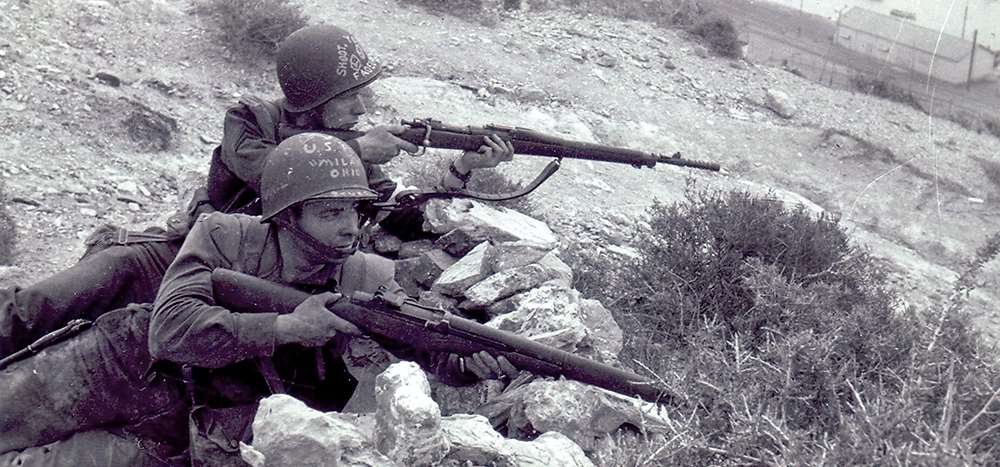
The northernmost element of the Western Task Force consisted primarily of the 9th Infantry Division’s 60th Infantry Regiment, which started coming ashore on beaches at the mouth of the Sebou River a little after 6 a.m. on November 8. The first wave of this landing was to have taken place under the cover of the pre-dawn darkness, but delays caused by the confusion and disorganization common to inexperience meant that the assault force had to wade ashore in broad daylight. The delay gave the Vichy defenders almost an hour to prepare themselves for battle, which handed over an advantage that greatly complicated the attack toward the main objective: the airfield at Port Lyautey.
The operational plan called for the 60th Infantry Regiment’s three battalions to establish the beachhead and then push into the interior to secure the airfield before nightfall. Once in American hands, the airfield would be used by USAAF P-40 fighters from the 33rd Fighter Group that would fly off the deck of one of Task Force 34’s escort carriers and then use the field to begin combat operations in support of ground forces. Having lost the element of surprise before the beach assault began, the 60th Infantry was beset by complications and difficulties from the start, but then when the opposition put up a real fight, the situation worsened.
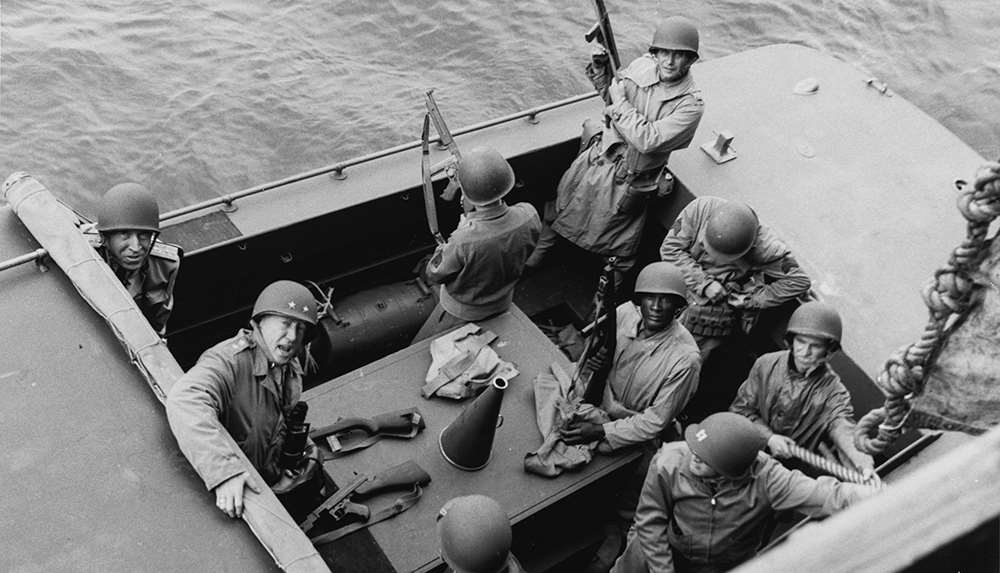
Vichy defenders swept the beaches with machine gun, mortar and light artillery fire, much of which came from a fortification (or kasbah) on the river that provided an excellent defensive position. Although a force of only 70 Foreign Legionnaires occupied the kasbah, they managed to hold onto the structure for the next two days, despite repeated American attempts to capture it. By midday on November 10, Port Lyautey and the airfield had fallen but the kasbah still stood, so Navy aircraft were called in to work it over. A barrage of 105 mm howitzer fire then pounded the fortification, reducing it to little more than a rubble pile. Before the Vichy defenders inside its walls could recover from the combination aerial and artillery bombardment, U.S. Army soldiers charged the position with fixed bayonets and captured it once and for all. The following day, a truce was reached with the French troops in the area, which ended the Western Task Force’s fight during Operation Torch.
When soldiers of the 60th Infantry stormed the kasbah on November 10, they did so armed with 16" M1905 bayonets mounted on the two models of rifle that did all the fighting for U.S. forces during Operation Torch: the 1903 Springfield and the M1 Garand. The photographic record of the invasion shows those guns in roughly equal proportion to one another, and, in some cases, they are even serving side by side. For example, the 1st Ranger Battalion came ashore at Arzew 25 miles northeast of Oran before dawn on November 8 as the spearhead element of the Center Task Force’s left flank, and it did so armed with both the M1903 and the M1.
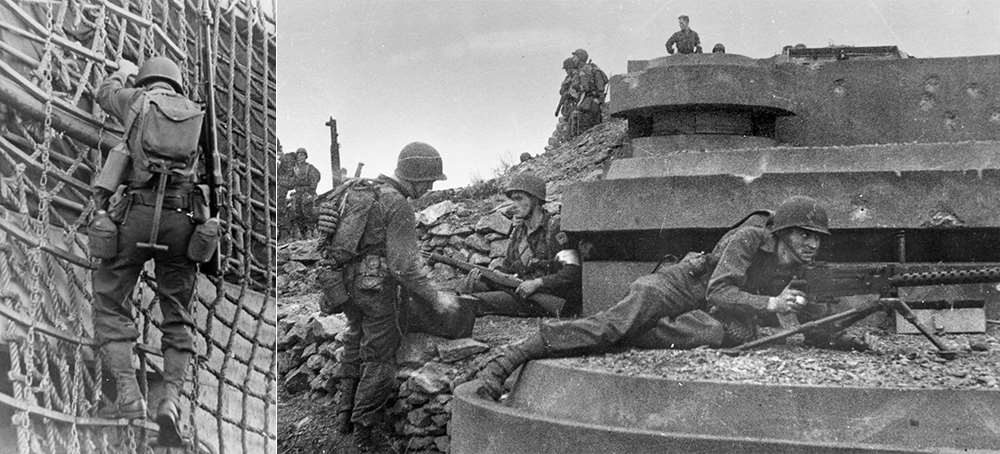
The six Ranger companies swiftly captured a French fortification overlooking the inner harbor and an artillery battery in the hills above it that was armed with four dangerous 105 mm guns. It was a stunning success that cleared the way for elements of the 1st Infantry Division to land unopposed. After sunrise, a photographer climbed the heights above the harbor and snapped a series of photos showing the Rangers holding the positions they had captured overnight. The images show two Ranger corporals, Robert M. Bevan and Carl W. Drost, both from Iowa, aiming their rifles toward the port below. Bevan is armed with an M1903 rifle equipped with the M1 rifle grenade launcher, and Drost is armed with an M1 Garand. One of the reasons that both rifles were still in service in late 1942 was that production of the M1 had not yet reached a high enough level to replace the ‘03 in all Army units, but, in addition to that, the M7 rifle grenade launcher for the M1 Garand had not yet entered service. Thus, the only option for arming a grenadier in late 1942 was the M1903 rifle with its M1 rifle grenade launcher.
While the two American rifles that fought the battles associated with Operation Torch were in many ways the stars of the show, other examples of American firepower proved themselves in combat during this opening phase of the North African campaign. Both models of the Thompson submachine gun—the M1928A1 and the M1—are well-documented in the photographic record as having been a part of the Torch landings. In those days before the adoption of the M3 “grease gun,” the Thompson was the only submachine gun widely available to U.S. fighting forces, and that is why it can be seen arming so many of the men of the Center Task Force.
Both the Browning M1919A4 .30-cal. machine gun and the M1918A2 Browning Automatic Rifle also armed the men who came to capture Oran, most of whom had never experienced combat before. But because they were well equipped with some of the finest firearms in the world, they won their objectives and acquitted themselves admirably during the first day of Torch. At 5 p.m. on November 9, though, the 1st Infantry Division began pushing toward the city while overcoming or bypassing three isolated strongpoints of French resistance at St. Cloud, Valmy and Misserghin. By 1 p.m. the following day, Oran had been captured, and the battle was over. The Eastern Task Force’s effort to capture Algiers encountered the least opposition of the entire operation, and the city surrendered to the British and American units that fought there on November 9.
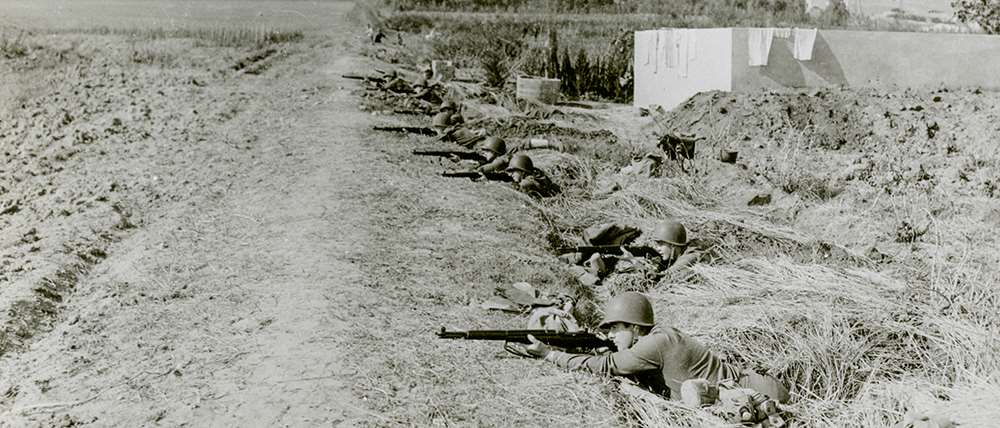
Operation Torch was of unprecedented scale and, although amphibious operations later in the war would exceed its size and complexity, it was the largest such operation yet attempted. The Vichy French and the Germans had been taken by surprise, a foothold in North Africa had been secured, the morale of our home front had been improved and, most importantly, our war-winning alliance had learned valuable lessons about how to conduct coalition warfare. It produced a meaningfully important political outcome that would be repeated 300 days later with the Italians, but that was still a long way off.
The guns of Torch had opened the door to the “soft underbelly” that turned out not to be so soft after all. After Torch would come the bitter disappointment of Kasserine, the redemption of El Guettar and then the final victory of Tunis. Through all of it, the firepower that came ashore on Nov. 8, 1942, never let our troops down, and that is a legacy that is worth remembering.
An earlier version of this article stated that the Dauntless dive-bomber, the Wildcat fighter and the Avenger torpedo-bomber were all made by the Douglas Aircraft Company. Only the Dauntless was made by Douglas. The Wildcat fighter and Avenger torpedo-bomber were both made by the Grumman Aircraft Engineering Corporation.















